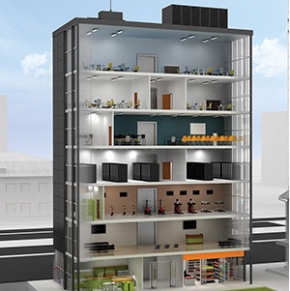
3 ways data centre managers can optimise energy consumption in data centres
Airedale’s Controls Project Manager Jon Martinez explains three ways data centre managers can optimise energy consumption in data centres.
Chiller water setpoint
There are a few ways of optimising energy consumption in a data centre; one of the ways is to optimise the set points of your operating equipment. For example, you can dynamically optimise the chilled water set point.
Rather than having it too low, what we do here at Airedale is have a calculation where we can optimise the chilled water operating set point to match what the system requires. This is opposed to, for example, fixing it at 7 degrees and then for 90% of the year that being too cold, and for the other remaining 10% of the year it is too warm.
Also you are not exactly matching what the system requirements are. So by monitoring everything and tying it all together, you can optimise that set point and save yourself a whole lot of energy, especially if you can raise the set point as high as possible and get as much free-cooling out of the system as possible. For example, if you are operating your system at 17 degrees chilled water set point as opposed to the traditional 7-12 degrees operating set points, you will get more free-cooling for a higher percentage of the year.
EC fan upgrade
Another option is to retro-fit Electronically Commutated (EC) Fans to your air movement equipment. EC Fans are an easy win for energy saving. You can retrofit an EC fan and instantly save energy just by running the fans at the same speed and airflow, but then you can further complement that by incorporating a more intelligent controls strategy that ramps the fans up and down, based on temperature or demand, because the curve on the EC fans, are more of an exponential type curve, so the lower down you are with your fan speed, the more energy savings you will make.
Building Management System
Finally another suggestion is to install a Building Management System (BMS) which will pick up a lot of information from the system.
 It automates a lot of the processes so you are not relying on manual adjustments all the time, and it logs and records a lot of the end usage data, which allows the user to effectively target areas where energy is being wasted.
It automates a lot of the processes so you are not relying on manual adjustments all the time, and it logs and records a lot of the end usage data, which allows the user to effectively target areas where energy is being wasted.
If you have got a spike in energy at 2 o’clock in the morning, and you have got a monitoring system in place that looks at the variables around it, you could target such areas, and take actions to reduce energy consumption accordingly.
Latest news

28th March 2025
FLIR Si1-LD Acoustic Imaging Camera for Compressed Air Leak Detection
FLIR, a Teledyne Technologies company, introduces the Si1-LD, an industrial acoustic imaging camera that brings faster and more accurate compressed air leak detection to those operating on a modest condition monitoring budget.
Posted in Acoustics, Noise & Vibration Control, Articles, Building Industry News, Building Products & Structures, Building Services, Facility Management & Building Services, Information Technology, Innovations & New Products, Retrofit & Renovation, Sustainability & Energy Efficiency, Thermal Imaging and Monitors
28th March 2025
LIFTEX 2025 Seminar programme announced
Registration has opened for LIFTEX 2025. Now in its 37th year, LIFTEX 2025 is the UK’s only dedicated exhibition for the lift, escalator and access industry and takes place only once every three years.
Posted in Access Control & Door Entry Systems, Accessibility, Articles, Building Industry Events, Building Industry News, Building Products & Structures, Building Regulations & Accreditations, Building Services, Exhibitions and Conferences, Facility Management & Building Services, Health & Safety, Retrofit & Renovation, Security and Fire Protection, Seminars
28th March 2025
MCRMA welcomes ArcelorMittal UK to membership
A UK division of the global steelmaking business ArcelorMittal has become the latest new member of the MCRMA, the industry association representing the metal building envelope sector.
Posted in Articles, Building Associations & Institutes, Building Industry News, Building Products & Structures, Building Systems, Cladding, Facades, Posts, Restoration & Refurbishment, Retrofit & Renovation, Roofs, Steel and Structural Frames, Walls
28th March 2025
Abloy: Managing access and security in Telecoms infrastructure
Telecommunications infrastructure underpins much of the world’s economy and critical services, but the industry is vulnerable to physical threats, from sabotage to theft and accidental damage, as Abloy UK explains here…
Posted in Access Control & Door Entry Systems, Architectural Ironmongery, Articles, Building Industry News, Building Products & Structures, Building Regulations & Accreditations, Building Services, Doors, Facility Management & Building Services, Information Technology, Innovations & New Products, Posts, Publications, Research & Materials Testing, Retrofit & Renovation, Security and Fire Protection
 Sign up:
Sign up: